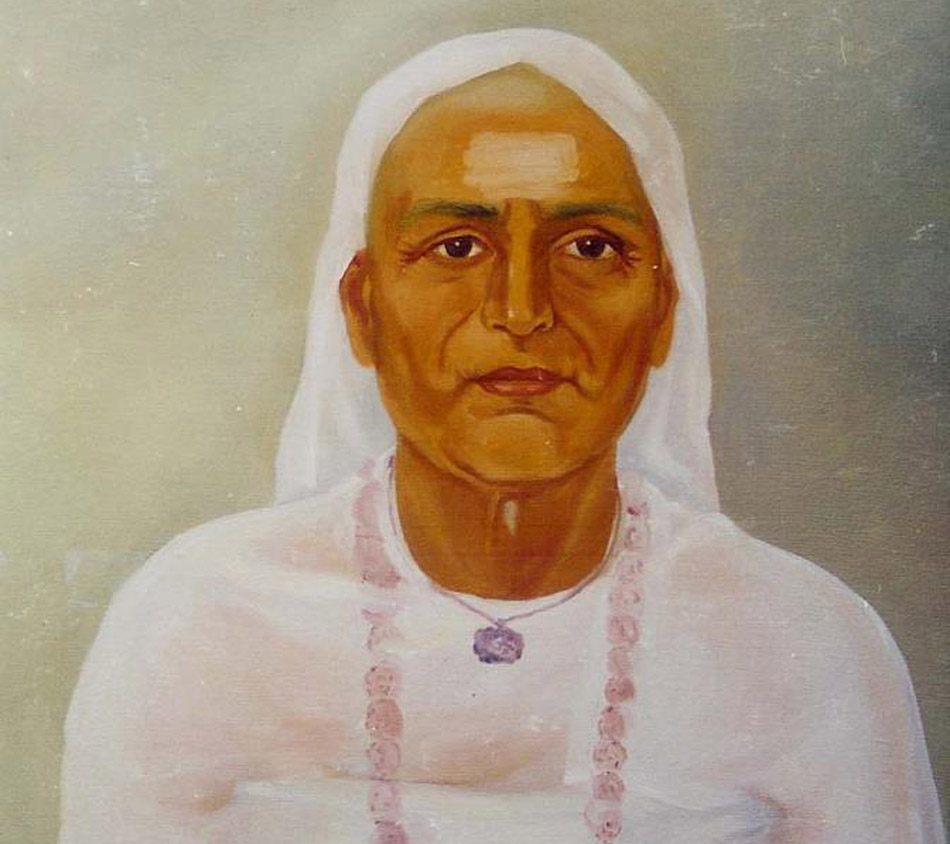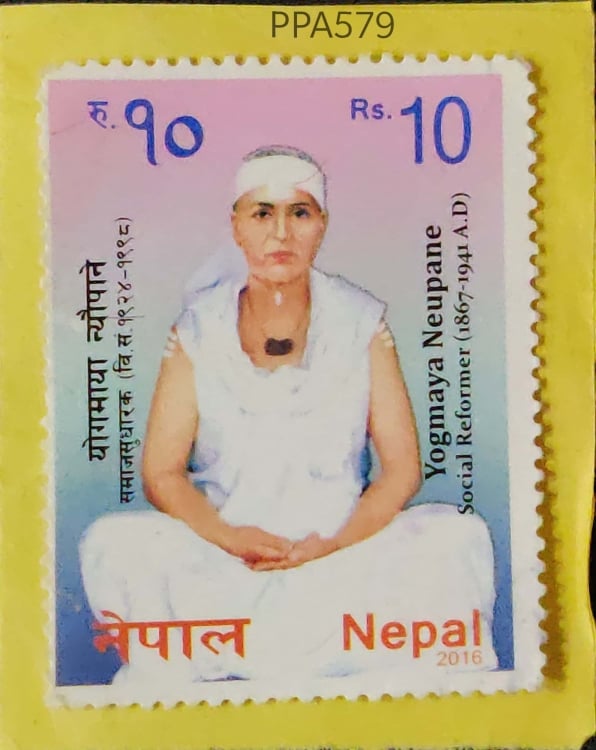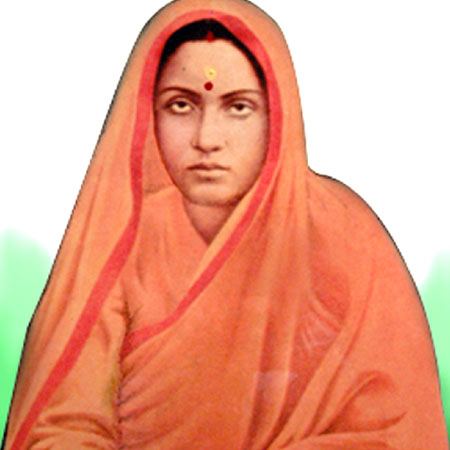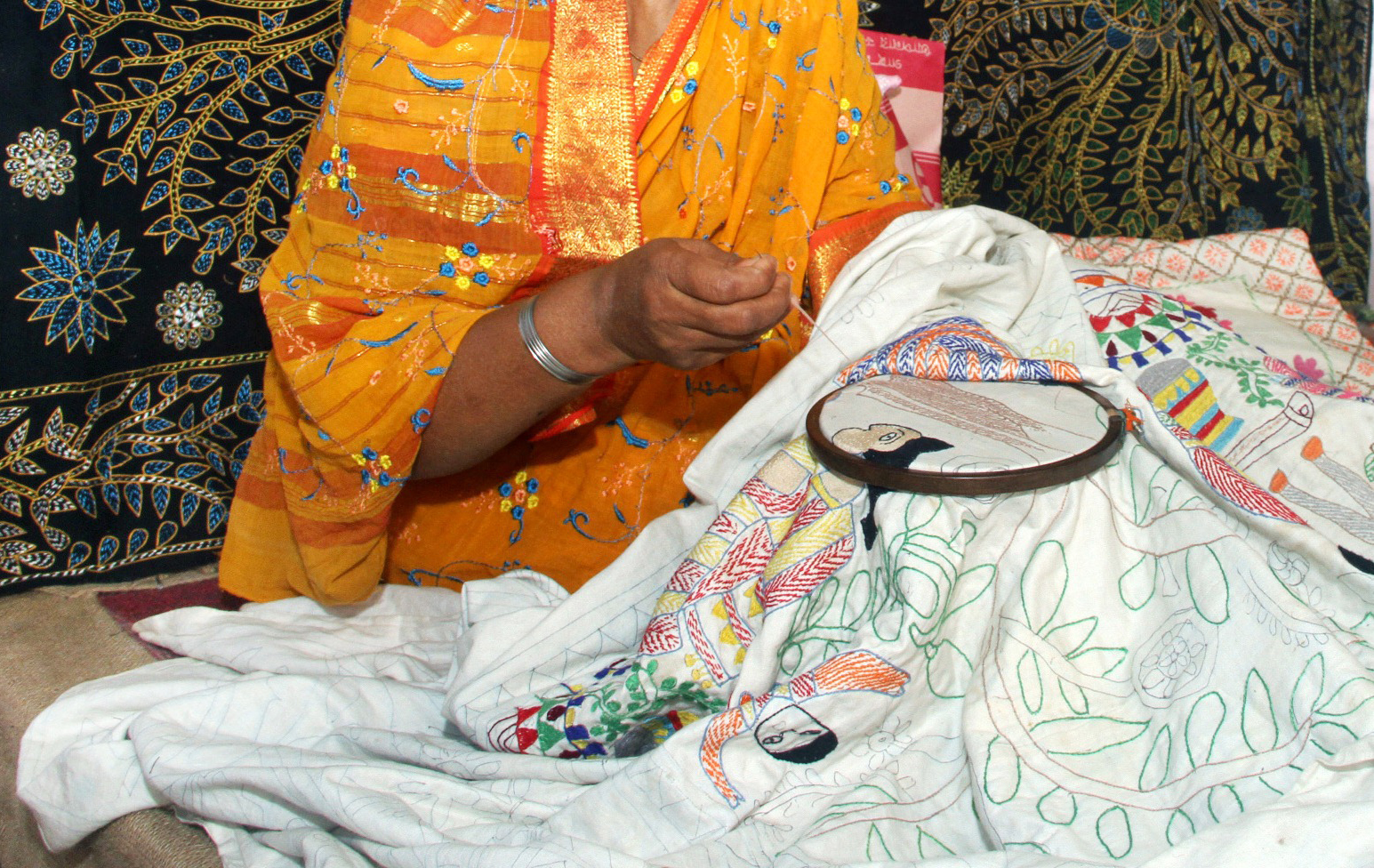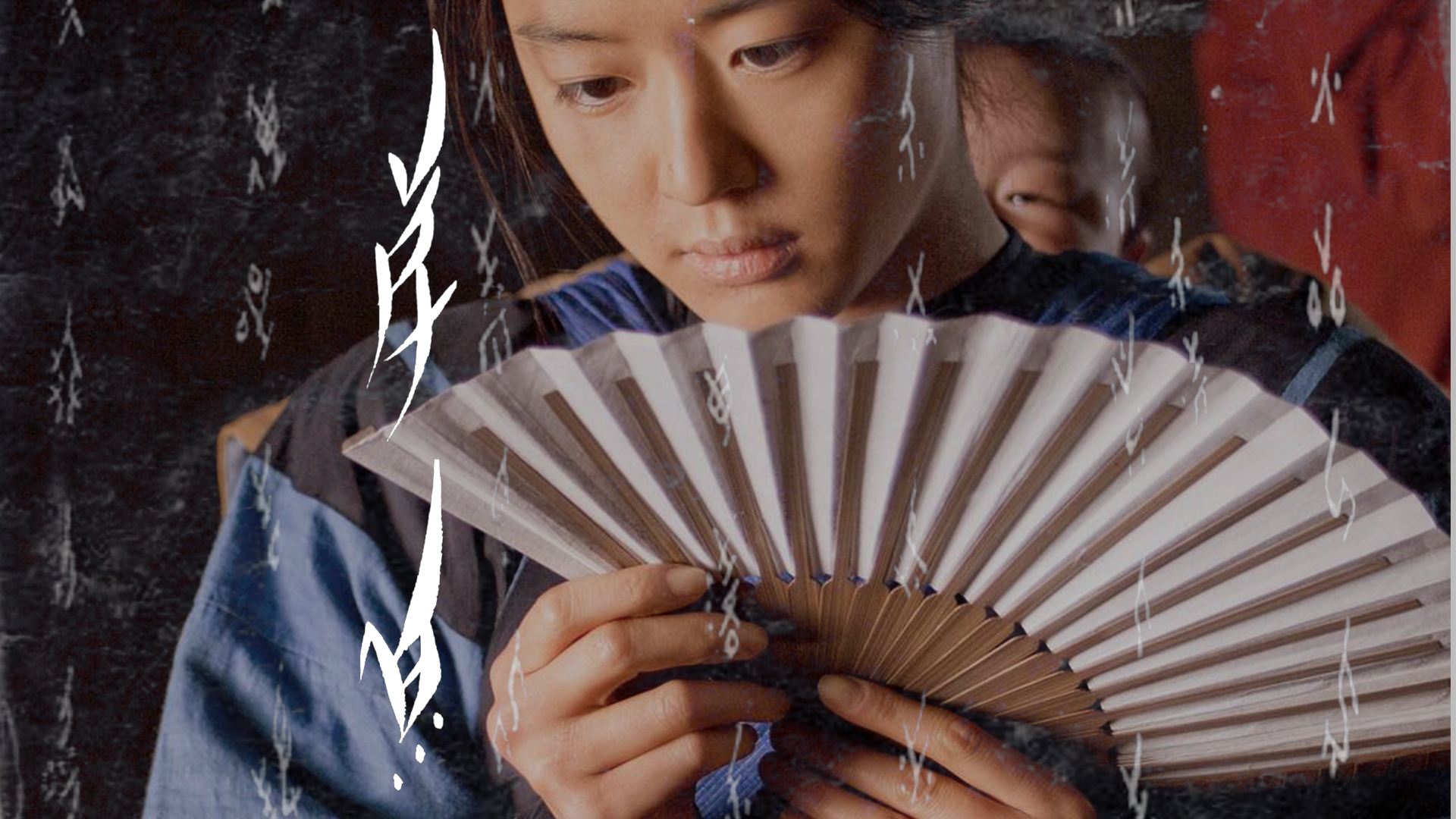Yogmaya Neupane isn’t a name that can be found in mainstream accounts of Nepali history. Born during the oppressive regime of the Ranas, she led a very unconventional life for a woman during early twentieth century Nepal. She remarried (possibly twice), then renounced the world for asceticism, and challenged the authorities to create a dharmarajya. In 1941, Yogmaya and more than 60 of her disciples drowned themselves in the Arun River, as jal samadhi, in protest against the Rana government who refused to keep their promise of reform.
However, Michael Hutt, Professor of Nepali and Himalayan Studies at the School of Oriental and African Studies, London, says that there is no mention of this incident whatsoever in published history of Nepal. In fact, Yogmaya’s life and activism was forgotten for a long time, to the point that her story became something akin to myth. Hutt argues that some rebellions become a victim of “censored remembering” due to unconducive socio-political realities which still uphold the values that the nearly forgotten rebellion tries to fight against. Yogmaya Neupane’s story is an example of this. For nearly sixty years, her fight against sati, caste discrimination, and the power structures of Brahmins and landlords lay unremembered.
The life and story of a rebel ascetic
In 2011, Hutt visited the Bhojpur district of Nepal, where Yogmaya was born. Her descendants claim that they can place her in their ancestral bloodline. If there is such concrete evidence of her existence, then how was her story forgotten, and how was it later remembered? Before we answer that, let us look at the life of Yogmaya Neupane. She was born sometime between 1860 and 1868 in a Brahmin family, to the couple Shrilal Upadhyaya Neupane and Chandrakala Neupane. She was the eldest child and the only daughter among three children. Her parents married her off to a Koirala boy somewhere between the ages of 5-9. (The number of uncertainties about her biographical facts only remind us of the long period during which her story was forgotten and nearly became a folk tale).
Shortly after marriage, her husband died, and she suffered abuse at the hands of her in-laws, who blamed her for their son’s death and considered her inauspicious. After several years there, she went back to her maternal home. While in her native town, she fell in love with a Brahmin man and fled to Assam with him. After his death, she is believed to have married another man, with whom she had a daughter named Nainakala.
In the years between 1903 and 1916, she returned with her daughter to Bhojpur, her home district. During this time, Yogmaya renounced all worldly pleasures and took up asceticism. She set up an ashram in the village of Majhuwabeshi. Her practice was austere and she meditated for long hours, sometimes foregoing food. She shaved her head and wore a single piece of cloth around her body. Soon, people heard about her powers and there gathered a group of followers and disciples, largely including young widows, freed slaves, and Dalits.
As a political revolutionary, she demanded dharmarajya and sent one of her disciples Prem Narayan Bhandari to Kathmandu to preach her ideas. During several visits between 1929 and 1936, the government gave them reassurances but nothing changed. Later in 1936, Yogmaya went to Kathmandu herself, met Prime Minister Juddha Shumsher Rana, and submitted a 24-point appeal elaborating her proposed reforms. The reforms she suggested criticised the state of society and the lack of dharma.
As a political revolutionary, she demanded dharmarajya and sent one of her disciples Prem Narayan Bhandari to Kathmandu to preach her ideas.
She asked Juddha Shumsher for “the alms of the holy order of truth and justice”. Seeing a lack of action, in 1938, Yogmaya made a plan for self-immolation along with 240 of her disciples. The district governor sent soldiers to prevent this; Yogmaya and many men and women were arrested. She was released a few months later. Three years later, with fewer disciples, she planned for a jal samadhi, where Yogmaya and 67 of her disciples drowned themselves in the Arun River.
Yogmaya’s efforts for social reform
Through her life story, it is evident that she was a rebel against the social evils of the time: she was against Sati and pushed the government to ban it, she supported widow remarriage, and she renounced her Brahmin status and welcomed people from all walks of life to be her disciples. She also formed the first Nari Samiti in Nepal. Nari Samiti was a non-violent movement against discriminatory practices against women like child marriage.
For Yogmaya, religion was very important, and in fact, she saw it as the solution to the problems around her. In this vein, she composed poetry, which was recited by her daughter Nainakala to Prem Narayan who then wrote it down. This collection of poetry is called Sarvartha Yogabani. Tina Sreshtha divides the Yogabani into four categories based on the themes it deals with: while there are devotional verses, there are verses which talk about the exploitation of the poor, those which denounce the Rana rule and call for the establishment of the dharmarajya. This politico-religious text condemns the corruption of Brahmins, moneylenders, landlords and thus the Rana government tried to have it destroyed before its publication in Assam.
The rediscovery of a revolutionary
How was this buried history of Yogmaya Neupane discovered and reclaimed by Nepali feminists and revolutionaries? National narratives have a tendency to suppress counternarratives that challenge them. In this case, the American anthropologist Barbara Nimri Aziz discovered the story of Yogmaya in the 1980s. Aziz then told the story to Parijat, a writer who held influence in communist literary circles. During the 1970s and 1980s, Parijat’s residence in Kathmandu became a hub for leftist thinkers and activists.
Though it was risky to share and publish accounts of rebellion from Nepali history under the Panchayat regime, Parijat was inspired by what she learned from Aziz about Yogmaya and later read Sarvartha Yogabani. She encouraged her associates to do further research and make Yogmaya’s name better known. This was fruitful because between 1984 and 1986, one of her associates, Uttam Prasad Pant, published three articles in Nepali literary journals. In these, Yogmaya was represented only as a female poet so that it would not be censored by the Panchayat government.
A few weeks later, Lekhnath Bhandari wrote an essay on Yogmaya titled “त्यो पहिलो विद्रोहिणी योगमाया” (Yogmaya, the First Woman Rebel) which appeared in one of Nepal’s leading feminist magazines, Asmita. Here, she was represented as Nepal’s first woman poet and woman activist. In 2001, Barbara Nimri Aziz’s book Heir to a Silent Song: Two Rebel Women of Nepal was published. Slowly, Yogmaya’s story became more known and was established as fact. On 8 March 2011, her statue was unveiled in Bhojpur to mark International Women’s Day.
Slowly, Yogmaya’s story became more known and was established as fact. On 8 March 2011, her statue was unveiled in Bhojpur to mark International Women’s Day.
Hutt compares the mythologisation of Yogmaya Neupane to that of Joan of Arc (Jeanne d’Arc). ‘Like Joan of Arc’s much-mythologised life, Yogmaya’s story is organised with a dramatic sense – ‘first the glory of the hero with an overarching conviction of personal mission, then reversal, the destruction of hopes and … extinction’ (Warner 1981, 264)) – and it ends in destruction not as defeat but as victory.’ (Hutt, 394)
Yogmaya Neupane is thus a politico-religious figure, who is celebrated in modern-day secular Nepal for her preaching of moral and social righteousness. Through religion, in the form of Sarvartha Yogabani, she critiqued the status quo and demanded a dharmarajya. She defied traditional gender roles in many forms as a mother, daughter, and wife. As a female ascetic, Yogmaya showed that women could step outside the domestic realm and wield power, thereby challenging the deeply rooted norms of the time.
References:
Ghimire, Asmita. “Yogmaya Neupane: The Unknown Rhetorician and the Known Rebel – CFSHRC.” Colostate.edu, 13 June 2022, wac.colostate.edu/docs/peitho/article/yogmaya-neupane-the-unknown-rhetorician-and-the-known-rebel/. Accessed 12 Aug. 2025.
Hutt, Michael. “The Disappearance and Reappearance of Yogmaya: Recovering a Nepali Revolutionary Icon.” Contemporary South Asia, vol. 21, no. 4, Dec. 2013, pp. 382–97, https://doi.org/10.1080/09584935.2013.856380. Accessed 23 Feb. 2021.
Lyytikäinen, Minna, et al. “Toward Feminist Genealogies for Peace Research.” Cooperation and Conflict, vol. 56, no. 1, [Sage Publications, Inc., Sage Publications, Ltd.], 2021, pp. 3–25, https://doi.org/10.2307/48649513. JSTOR.
“NEPAL: Yogmaya Neupane: Nepal’s First Female Revolutionary.” PeaceWomen, 3 Feb. 2015, www.peacewomen.org/content/nepal-yogmaya-neupane-nepals-first-female-revolutionary.
“The Iconisation of Yogmaya Neupane – Social Science Baha.” Soscbaha.org, 2019, soscbaha.org/lecture-series/the-iconisation-of-yogmaya-neupane/. Accessed 12 Aug. 2025.
Wagle, Anupa. “Yogmaya: Historical Reality in the Fictional Existence.” JODEM: Journal of Language and Literature, vol. 10, no. 1, Sept. 2019, pp. 1–11, https://doi.org/10.3126/jodem.v10i1.30393. Accessed 15 Sept. 2021.
About the author(s)
Samhita is a final year student of English Studies at IIT Madras. She enjoys reading, and especially loves engaging with women's fiction, as part of her academic research as well. She's a huge fan of sudokus, crosswords, and all sorts of puzzles.

